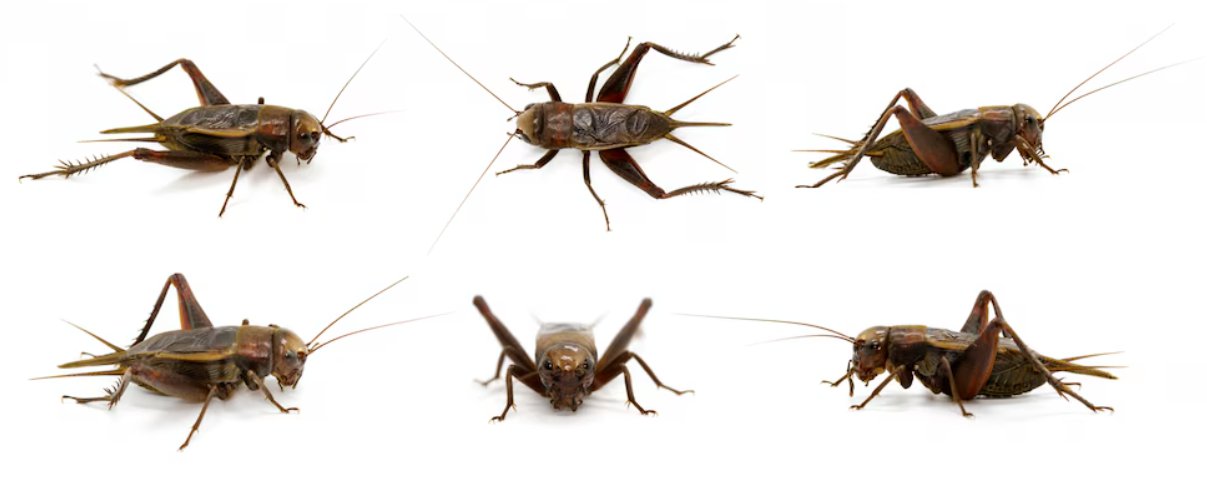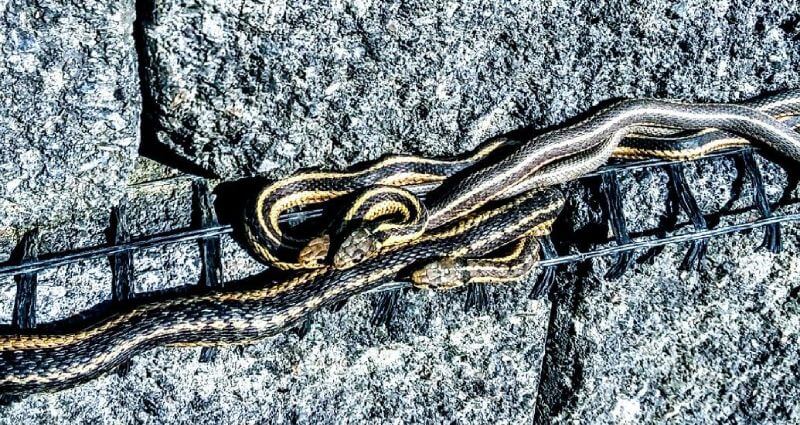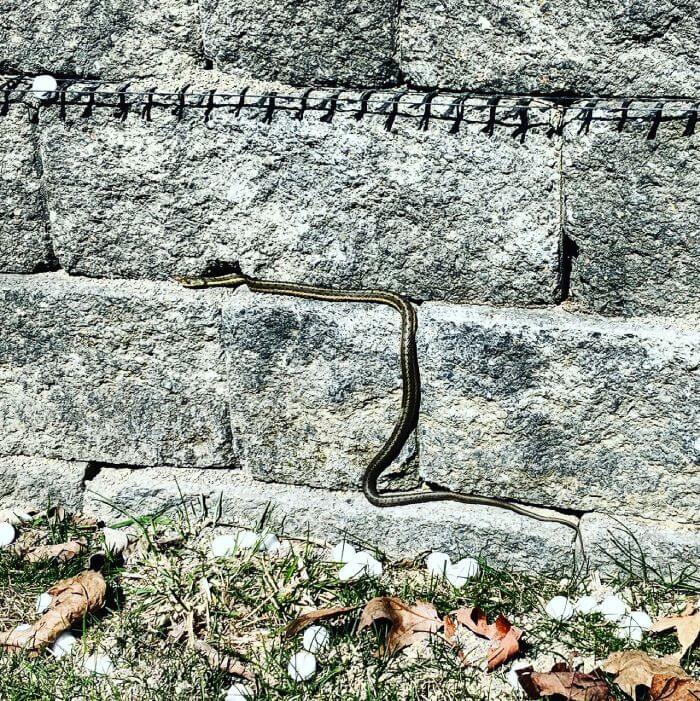Chirping Crickets in Las Vegas — Identification, Damage & Prevention


Crickets are common in the Las Vegas valley, especially during late summer and fall when cooler nights encourage them to seek shelter. Most species that invade homes are field crickets, house crickets, or camel crickets. Though their nocturnal chirping is often the biggest annoyance, crickets can occasionally damage clothing, carpets and even rubber or plastic goods. Understanding why crickets enter homes and how to keep them out can help you stop the midnight serenade.
Common Cricket Species Around Las Vegas
Field Crickets (Gryllus spp.)
These dark brown to black crickets measure about 1/2–3/4 inch. They’re strongly attracted to lights and often congregate around homes at night. Field crickets eat plants and dead insects, but indoors they may nibble fabrics (cotton, linen, wool and silk), especially if the material is soiled by perspiration or food. They are famous singers—the males’ chirps come from rubbing their wings together.House Crickets (Acheta domesticus)
Light yellowish-brown with three dark bands behind the head, house crickets reach about 3/4 inch long. They live outdoors but thrive around garbage dumps and may enter homes when temperatures drop. Like field crickets, they are drawn to light. House crickets feed on plant matter and dead insects, but they can also chew fabrics, especially silk and wool, and cause noticeable damage if present in large numbers.Camel Crickets (Ceuthophilus spp.)
Also called cave crickets, these wingless crickets are tan and humped-backed. They prefer cool, damp, dark areas such as basements, crawl spaces and garages. Camel crickets rarely damage fabrics and do not chirp. Indoors they sometimes feed on paper products.
Why Crickets Enter Homes
Crickets generally live outdoors but may wander inside through open doors, poorly sealed thresholds or cracks in foundations. Field and house crickets are especially attracted to bright lights at night. Dry conditions followed by late-summer moisture encourage outbreaks. Camel crickets seek moisture and darkness; a damp basement or leaky crawl space provides ideal habitat. Cluttered yards with stacked firewood, tall grass, leaf piles or debris offer shelter and increase the chances of crickets breeding near your home.
Damage and Risks
Annoyance:
Chirping is the most common complaint; males chirp to attract mates.Fabric Damage:
Crickets can chew on fabrics such as wool, silk, nylon, rayon and cotton, especially if soiled by perspiration or food. However, serious damage usually requires a large infestation.Other Materials:
Field crickets may also nibble wood, plastic, rubber or leather goods, but this is relatively uncommon.Indoor Reproduction:
Crickets rarely reproduce indoors; most individuals die out by early winter. Camel crickets and house crickets may lay eggs inside if damp conditions persist, but this is rare.
Prevention: Keeping Crickets Out
Eliminate outdoor harborage:
Remove piles of leaves, firewood, bricks or lumber near the foundation. Cut tall grass and weeds and trim groundcovers back at least 18 inches from your home.
Reduce lights at night:
Crickets are strongly attracted to light. Switch to yellow bug lights or turn off unnecessary outdoor lighting.
Seal entry points:
Repair or replace weatherstripping and door thresholds. Caulk cracks in foundations, around windows and doors, and around utility penetrations. Ensure crawl-space vents are properly screened.
Reduce indoor moisture:
Fix plumbing leaks, use dehumidifiers or fans in damp basements, and improve ventilation. Removing moisture makes basements less hospitable to camel crickets.
Maintain cleanliness indoors:
Vacuum regularly and remove clutter. Sticky traps can help catch occasional crickets.
Use insecticides cautiously:
When non-chemical methods fail, perimeter sprays of pyrethroid insecticides (e.g., permethrin) around foundations can help. Inside, insecticides should be applied only to cracks and crevices where crickets hide; vacuum up dead crickets to prevent attracting other insects. Always follow label directions.
When to Call a Professional
Large numbers of crickets can overwhelm DIY efforts. If chirping continues despite your prevention measures, or if you see fabric damage and suspect an infestation, contact Desert Squad Pest & Wildlife. Our technicians will identify the species, locate breeding sites and tailor a treatment plan to eliminate crickets while preventing future invasions.
Stop the chirping for good—reach out today at 702-907-9453 to schedule a free inspection and reclaim your quiet nights!
WE’RE PROMPT
Need same day service? Call us at 702-907-9453 before 12:00 PM, Monday through Friday!
WE’RE PROFESSIONAL
We know you’re putting a lot of trust in our hands. Our team is highly trained and trustworthy.
WE’RE PARENTS, TOO
We do our work in a way that ensures your family is kept safe before, during, and after service.
SNAKES!


Two days ago we saw something rare…
A client had a big snake problem. Or a lot of little snake problems!
We arrived and walked to a retaining wall surrounding his pool. It was only 10am, still cold, and there were easily 10 garter snakes slithering all over his wall. Above is a pic of 3 along one block of his wall. This wall is easily over a hundred feet long!


After a failed attempt to discourage the snakes using hundreds of moth balls(see above moth balls on the ground) he called Upstate Wildlife Control!
He did not want to deal with snakes while entertaining his guests. Some guests are coming this weekend, so we needed a solution to his problem and fast! Our first step will be to lower the population of the snakes by trapping. Once the population is down, we can tackle the other issue… food. The snakes want food, shelter, and water. Just like we do. We will work to control the food source and any new snakes will find his pool area less attractive.
Call Upstate Wildlife Control at (518) 487-8282 to solve a snake issue at your house.
Call or Email
Our Address
2300 West Sahara Ave, Suite 800
Las Vegas, NV 89102
Business Hours
Mon-Fri: 6:00 AM - 6:00 PM Saturday: 9:00 AM - 3:00 PM

